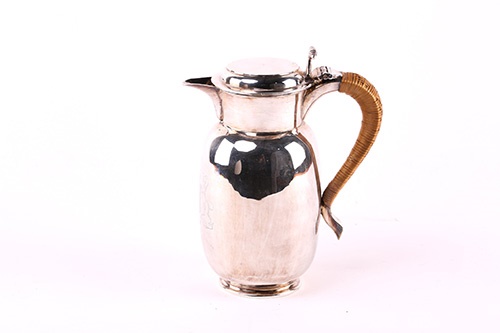Is Antique Silver a Good Investment?
Silver may have a smaller market than gold, but that doesn't mean it's not an attractive investment
04/05/2022
When markets are hit by uncertainty and volatility, precious metals tend to outperform traditional investments. Silver is often a solid store of wealth over lengthy time periods due to its widespread use in electronics and jewellery manufacturing.
During the height of the global financial crisis, between October 2007 and March 2009, silver bullion appreciated by 1.1%. For reference, during the same time period, the S&P 500 (a stock market index that tracks 500 of the largest companies listed on US stock exchanges) lost more than half of its value. Given this information, it's no surprise that investors have traditionally seen silver as a hedge against volatility.
Silver has risen to a seven-year high due to the Covid-19 pandemic, despite stock market turmoil and a shaky dollar. Naturally, as with any apparent peak in a market, many investors might question whether silver bullion is still a good investment right now.
In this post, Dawsons will shed some light on the positives and negatives of sterling silver bullion and the dangers and possible benefits of investing in the metal for the rest of 2022.
 A baluster shape silver hot water jug. Sold at Dawsons for £180.
A baluster shape silver hot water jug. Sold at Dawsons for £180.
Sterling Silver 101
Sterling silver is a 92.5% silver alloy with other hard metals, most often copper or nickel. Clients frequently inquire about the investment potential of sterling silver rather than fine silver since it is a less expensive option and is still common in the manufacture of jewellery and household products such as flatware and kitchenware.
Whilst in our experience, many investors rarely consider sterling silver to be a viable investment, it could be relatively profitable to hold onto some sterling silver in large enough amounts. Although it is around 7.5% cheaper than pure silver due to its lesser purity, sterling silver’s worth still links to the price of pure silver.
How to Determine the Worth of Your Sterling Silver
If your sterling silver carries the 925 hallmarks, it is a typical 92.5% pure silver alloy. Sterling silver coins or pieces that lack hallmarks are most likely plated and, as a result, are worth less as an investment.
 A collection of silver cutlery. Sold at Dawsons for £1,700.
A collection of silver cutlery. Sold at Dawsons for £1,700.
During Recessions and Uncertainty, Silver?
According to conventional thinking, silver is a buffer against instability and systemic collapse. While this is true for gold, it is not necessarily as true when it comes to silver, despite what current markets might suggest.
During the 1973-75 recession crisis, the price of silver increased as investors lost faith in the US currency, stock market, and commodities. This, however, is an exception to the norm. Between February and November 2001, when the dot-com bubble broke, the price of silver fell 9%. The same was true during the 1980 recession when the cost of silver plunged by 59% in just six months, continuining to fall for the rest of the year.
The Silver Lining
Shorting silver during the Covid-19-induced recession might be a profitable trading strategy. Buying sterling silver while prices are low is another possibility, but it's impossible to predict if silver prices will fall when the crisis fully ends.
Silver may serve as a diversifier for retirement investors since it tends to hold its value over time and outperform inflation. Sterling silver and silver bullion may be excellent short-term investments.
The expert team of Valuers at Dawsons would be happy to help you identify your antique silver. Please do get in touch should you have any queries, or maybe you have a piece of silver you would like to have valued.
We would love to hear from you.
Call us: 0207 431 9445 or get in touch via email: info@dawsonsauctions.co.uk.